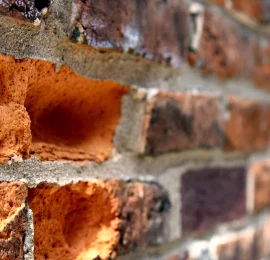Opening the Secrets of Lasting Stonework Building Practices for Eco-Friendly Buildings
Amongst the myriad methods to environment-friendly structure, sustainable masonry building stands out as a tried and true and long lasting technique that holds a riches of untapped capacity. From the option of products to ingenious construction techniques, the secrets to achieving sustainability within masonry construction are complex and intriguing.
Advantages of Sustainable Stonework Building And Construction
Embracing sustainable stonework construction methods not just decreases ecological impact yet also offers long-term financial benefits to building contractors and communities. By using materials like recycled bricks, blocks, and rocks, building contractors can dramatically decrease the carbon footprint of their jobs while advertising source efficiency. Furthermore, lasting stonework construction techniques, such as appropriate insulation and thermal mass homes, can boost energy effectiveness within structures, bring about reduced operational expenses with time.
Furthermore, the resilience and durability of stonework structures add to lasting financial benefits. Buildings built making use of sustainable stonework practices often require less repair and maintenance, equating to cost savings for contractors and property owners. The longevity of stonework materials also ensures that structures remain steady and safe, lowering the demand for regular restorations or substitutes.
Eco-Friendly Masonry Materials
Utilizing green stonework products is a critical action towards enhancing the sustainability of building and construction practices and decreasing environmental influence while making best use of long-lasting financial benefits. Sustainable masonry products are sourced, produced, and used in a fashion that decreases total environmental influence. Sustainable concrete obstructs integrate recycled accumulations and may feature better insulation buildings, contributing to power effectiveness in structures.
Furthermore, all-natural materials like adobe, rammed earth, and straw bundles offer superb thermal mass homes, minimizing the requirement for home heating and cooling down power. These products are usually in your area readily available, advertising local economic climates and minimizing transportation-related carbon discharges. By selecting green stonework products, building and construction tasks can significantly reduce their ecological footprint and contribute to the development of much healthier, a lot more sustainable built environments.
Energy-Efficient Masonry Strategies
Power effectiveness plays an important function in enhancing the sustainability of stonework building and construction methods. One key energy-efficient stonework technique is the usage of thermal mass, which includes incorporating thick materials like concrete or block into the structure's structure to soak up and keep warmth.

Technologies in Sustainable Masonry
Current bad credit car lots innovations in sustainable stonework practices have brought around ingenious methods that are improving the building market. One such technology is the growth of self-healing concrete, which makes use of germs embedded within the concrete to heal cracks autonomously. This breakthrough not just lowers upkeep expenses however likewise enhances the longevity of stonework structures, adding to their sustainability.
Another notable development is the use of recycled aggregates in stonework building and construction - masonry contractor. By incorporating products such as smashed ceramic waste or recycled glass into concrete blends, builders can lower the ecological effect of construction projects while maintaining architectural stability. This practice not just draws away waste from landfills but additionally conserves natural deposits, making it an essential advancement in lasting masonry construction
In addition, the combination of digital layout devices, such link as Structure Info Modeling (BIM), is revolutionizing the means masonry frameworks are prepared and constructed. BIM permits for even more accurate calculations, reduced product wastage, and boosted energy performance, ultimately leading to even more sustainable structure techniques. These technologies collectively symbolize a promising future for lasting masonry building in the period of green buildings.
Future Trends in Masonry Sustainability
With the ingenious strides made in lasting masonry methods, the future fads in masonry sustainability are positioned to more transform the building and construction industry. One of the vital patterns forming the future of stonework sustainability is the enhanced assimilation of technology. Improvements such as Structure Info Modeling (BIM) and digital truth simulations are being made use of to optimize masonry building procedures, leading to minimized product waste and improved energy effectiveness in structures.
Furthermore, the growth of unique sustainable materials is readied to play a substantial duty in enhancing the eco-friendliness of masonry building and construction. masonry contractor. Advancements like self-healing concrete, recycled aggregates, and bio-based binders are gaining grip for their capacity to minimize environmental effect while keeping architectural integrity

Conclusion
To conclude, sustainable masonry building and construction methods offer numerous advantages for environmentally friendly buildings. By making use of environment-friendly materials and energy-efficient strategies, masonry can add to a much more sustainable constructed atmosphere. Innovations in lasting masonry are constantly being developed to additionally enhance the ecological performance of structures. Looking in the direction of the future, the trend of masonry sustainability is anticipated to expand, bring about more eco friendly and energy-efficient building and construction techniques in the years to come.